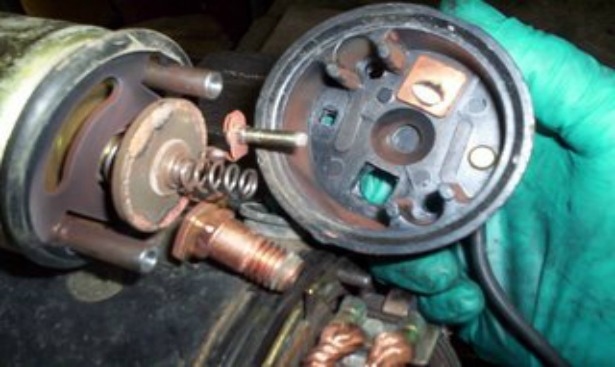Rebuilding A Delco Remy 37 MT Starter
As you can see in the video the steps required to disassemble a Delco starter are pretty basic. These days the remanufacturing business is booming because of the lower prices on starters mainly because of competition. The advantage of buying a reman is the warranty and time saved not having to take it apart for servicing and repair.
Our shop has joined the majority getting them either rebuilt by a local shop or purchasing a remanufactured unit. With our fleet we need dependable replacement parts to avoid break downs. It’s far more convenient to replace the starter instead of rebuilding.
The only exception is when a minor repair is required like the solenoid contacts not connecting the battery to the motor. A quick repair is the best route to take in some instances especially if parts are not readily available and up time is a factor.
A Common Problem With Solenoid Contacts
Many times if the starter just clicks and does not engage the end cap on the solenoid can be removed and the contacts have to be cleaned up. This can be done without removing the starter. (37MT Model) The complete rebuild on average would take 2 hours including re and re time. In our fleet operation we used to service all the starters once a year regardless of their condition. They would be disassembled and cleaned up at the very minimum.
Some of the newer diesel engines we run require a couple of hours labour to re and re the starter. It makes more sense to run the starter for at least 5 years and then replace it with a reman or new unit which saves on repair labour. The warranty that comes with new or reman starters is a bonus as well.
Most of our Cummins engines use Nippon Denso starters which have a gear reduction increasing the torque potential. They also use heavy ball bearings for the armature compared to solid bushings used in older units. Of course these models are a Japanese design and I’m impressed with the strength and durability they possess.
An Interesting Story About A Nippon Denso Starter
I have a friend who owned an Isuzu W5 cab over and he never touched his starter for 20 years. One day it did not engage and just made a clicking noise. The steel nose housing was mounted to an aluminum flywheel housing. These two metals tend to weld together over time. I went over to help him out and we could not remove the starter even with force.
It was there to stay without possibly using heat to separate the mounting surfaces. Instead I removed the solenoid cover and cleaned up the main battery contacts. That was the only problem so it cranked over with ease after reassembly. This goes to show the quality that went into The Nippon Denso starter.
The starter is the back bone of any engine and needs to be serviced routinely or just replaced at a set interval. It helps our fleet operation run more smoothly when our starters are cared for on a regular basis. Thanks for reading this post.
Please make your comments below if you have anything to add or you just want to ask a question. This blog is here to share and help others looking for answers.







